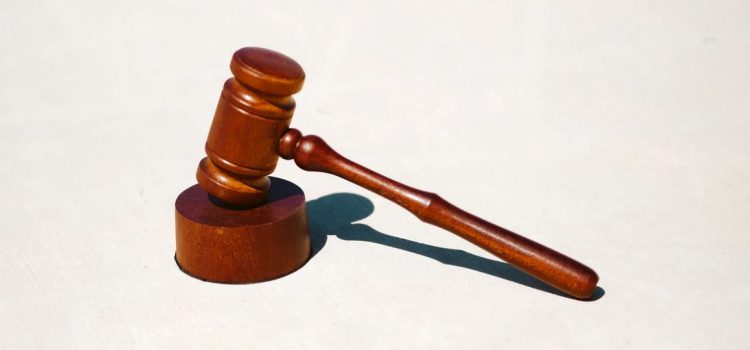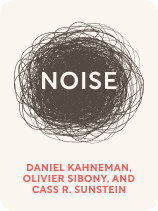

This article is an excerpt from the Shortform book guide to "Noise" by Daniel Kahneman, Olivier Sibony, and Cass Sunstein. Shortform has the world's best summaries and analyses of books you should be reading.
Like this article? Sign up for a free trial here .
What are the different types of noise from the book Noise: A Flaw in Human Judgment? How can you fight back against noise to make better judgments?
According to Olivier Sibony, Cass R. Sunstein, and Daniel Kahneman, noise and bias are the two main factors that stand in the way of human judgment. In their book Noise, they discuss the three different types of judgment noise: level noise, pattern noise, and occasion noise.
Keep reading to learn about the three different types of noise.
Three Types of Noise
According to Olivier Sibony, Cass R. Sunstein, and Daniel Kahneman, noise is the amount of variance in outcomes, so it would be easy to think of noise as random. But it isn’t. Once we know what to look for, we can see that noise comes in three main types: level noise, pattern noise, and occasion noise.
1) Level noise occurs when one person’s average judgments differ from the average person’s average judgments in a consistent way. For example, some teachers grade more or less harshly than others over time. Similarly, some economic forecasters are more or less optimistic than others over time. The key idea here is that level noise refers to the overall patterns of each judger compared with the average overall patterns of all judgers. (Shortform note: Level noise may not be consistent over time; in fact, it may be noisy itself. One study has shown that graders inflate scores over time because they mistake their growing comfort with the act of grading for an increase in the quality of the materials being graded. An effect like this doesn’t invalidate Noise’s point so much as it demonstrates how complicated the problem is.)
2) Pattern noise is the deviation that occurs when a judger is unusually affected by a specific situation for one reason or another. For example, a forecaster might typically be more optimistic than most, but a specific scenario (for example, evaluating a startup company) causes her to be more pessimistic than most of her peers would be about the same case.
Pattern noise occurs as the result of people’s personalities and unique experiences. Some of this noise is stable over time. Conversely, some pattern noise is transient—the result of current or recent circumstances.
- For example, maybe our forecaster lost money on startups earlier in her career, and now she is always cautious about them. This is an example of stable pattern noise.
- Or, maybe our forecaster read an article this morning about a different startup that failed spectacularly, and so she’s feeling cautious about startups right now; yesterday she might have felt differently. This is an example of transient pattern noise.
(Shortform note: There’s some overlap between the concept of transient pattern noise and the concept of occasion noise outlined below. Though the authors don’t say so explicitly, the difference seems to be that transient pattern noise results from factors specific to an individual, whereas occasion noise consists of more universally applicable factors that affect everyone in similar ways.)
3) Occasion noise describes the variability within a single person caused by numerous seemingly random factors. The authors point to studies showing that judgments can be affected by any of the following:
- The weather: One study shows that college admissions officers weigh academic credentials more heavily on cloudy days and non-academic factors more heavily on sunny days.
- Mood (and sports): Several studies show that judges sentence more harshly following a loss by their local football team and more leniently following a win. Presumably, their sports-induced mood is influencing their judgment.
- Time of day: Studies have found that doctors are more likely to prescribe opioids toward the end of the day than earlier in the day. It’s possible that when doctors are tired, stressed, and rushed, they make diagnostic mistakes and possibly reach for a quick fix in pill form.
- The order in a series of judgments: When judges have granted asylum to several people in a row, they become increasingly likely to deny asylum (and vice versa), likely due to an unconscious attempt to maintain balance.
- The order that information is presented: If you hear that a politician is smart, driven, charismatic, and ruthless, you probably form a different picture than if you heard about a politician who is ruthless, charismatic, driven, and smart.
| How to Fight Occasion Noise Occasion noise is tricky. Like pattern noise, it can be hard to predict it in advance or even to notice it while it’s happening. Plus, you can’t exactly standardize the weather to make sure everyone gets the same judgments. That said, there are a few techniques that might help minimize the influence of occasion noise: -Some types of occasion noise (such as that arising from the order of information) can be controlled with proper decision-making strategies like the ones listed later in this guide. -Other occasion noise (like tired doctors overprescribing opioids) might be prevented by watching out for information overload and excessive stress; though that’s easier said than done in many professions. -We might be able to mitigate factors like weather, mood, and time of day by having multiple judgers assess a situation independently before comparing notes. The idea is that different judgers will be subject to different occasion factors and will balance out. Ideally, the judgers will also follow a procedure that minimizes occasion noise by telling them what information to pay attention to (see the sample hiring procedure later in this guide to learn how). |
| The Three Types of Noise in Action Though the authors break noise into three types for analytical purposes, it’s worth pointing out that in practice, any or all of the three types can be at play in a given situation. To get a sense of how that works, imagine the following. You’ve been convicted of shoplifting. Judge Thompson will decide your sentence. Judge Thompson, on average, delivers much lighter sentences than his colleagues. This is level noise—and reason for you to be optimistic about your punishment. His parents own a small retail business that has had serious problems with shoplifting over the years. He therefore sentences shoplifters much more harshly than do his peers. This is pattern noise—and bad news for you. He just returned from a relaxing holiday and is in a great mood this morning. This is occasion noise—maybe you’ll get a break after all. If your case had gone to a different judge, all of these variables would be different—and so would your sentence. This is one way the justice system is noisy. But if you’d committed a different crime, or even if you’d caught Judge Thompson on a different day, your sentence would likewise be different. That’s another way the justice system is noisy. And the same holds true for any system relying on human judgments. |

———End of Preview———
Like what you just read? Read the rest of the world's best book summary and analysis of Daniel Kahneman, Olivier Sibony, and Cass Sunstein's "Noise" at Shortform .
Here's what you'll find in our full Noise summary :
- A deep dive into the unexpected and unwanted variance in human judgments
- How to reduce or eliminate noise from your decision-making
- How to practice good decision hygiene






